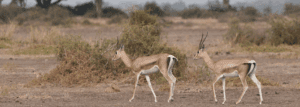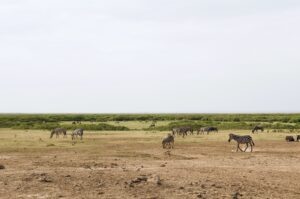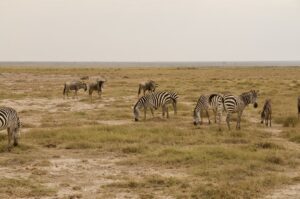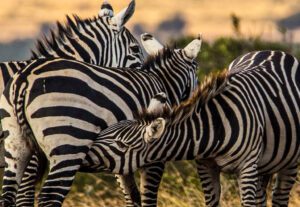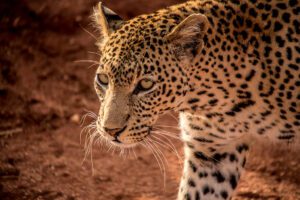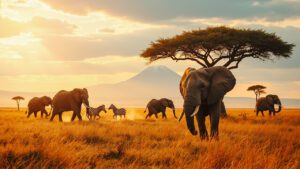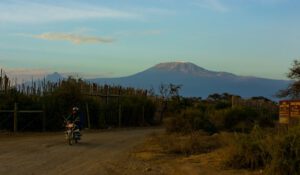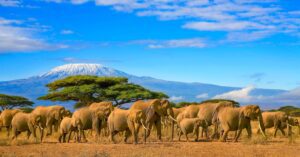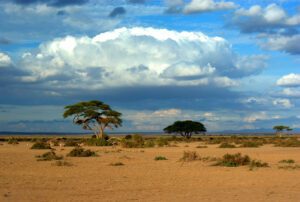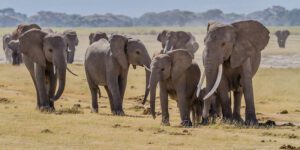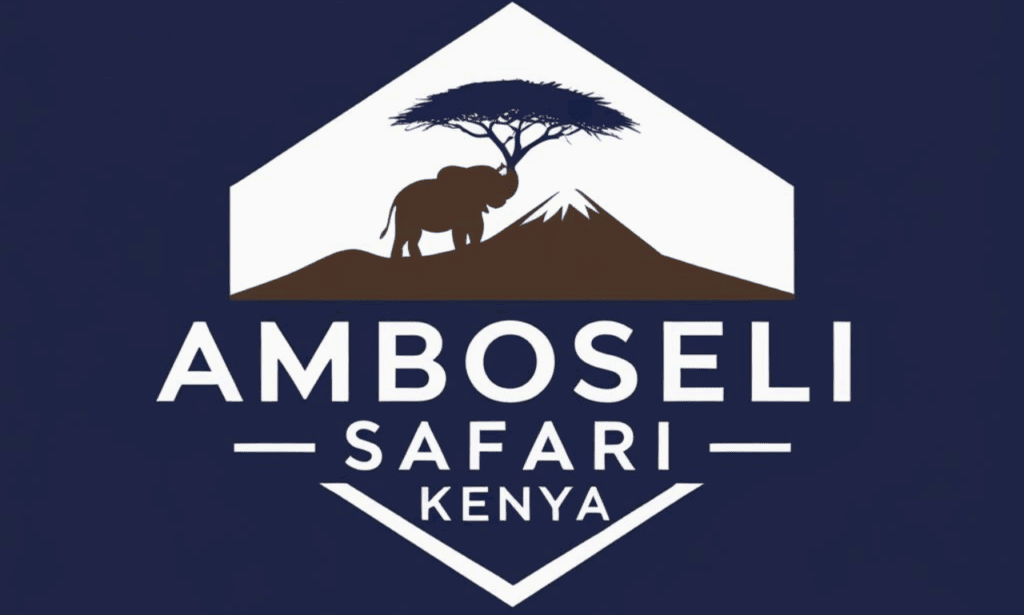Have you ever wondered what it would be like to share your backyard with a colorful crowd of feathery personalities? That’s pretty much what life is like in Amboseli National Park, a vibrant corner of Kenya where birds of all shapes, sizes, and colors gather in the shadows of Mount Kilimanjaro. These birds aren’t just pretty to look at, they’re an important part of the ecosystem, helping plants grow and keeping nature in balance. Whether it’s flamingos, eagles, or quirky hornbills, each bird has a unique story, and we’re here to break it all down for you in the simplest way possible. Let’s go birdwatching, shall we?
What are the most common bird species found in Amboseli?
Amboseli National Park, located in Kenya, is home to over 400 species of birds, making it a paradise for bird lovers. Some of the most common bird species found here include flamingos, marabou storks, crowned cranes, and African jacanas.
Flamingos are often seen in large, striking flocks around water bodies like Lake Amboseli. These birds are famous for their beautiful pink feathers, which they get from consuming algae in the water. Another familiar sight is the marabou stork, a large, scavenger bird with a bald head and long, dangling neck pouch. It might not look pretty, but marabou storks play an important role in cleaning up the environment by eating carrion (dead animals).
Crowned cranes, with their golden, spiky “crown” of feathers, are another iconic species. They’re often found in Amboseli’s wetlands and grasslands, where they dance and call to each other when courting. Similarly, African jacanas, known as “lily trotters,” run across floating vegetation in wetlands thanks to their long toes that help them “walk on water.”
These birds, along with various species of weavers, hornbills, kingfishers, and egrets, are commonly seen throughout the park. Such diversity makes Amboseli an incredible place for anyone interested in birdwatching or wildlife photography.
Which bird species in Amboseli are considered endemic or unique to the region?
One bird that stands out in Amboseli and the surrounding regions of East Africa is the Taveta golden weaver. This species is classified as “endemic,” meaning it’s native to this part of the world and isn’t naturally found elsewhere.
The Taveta golden weaver is a stunning bird with bright yellow feathers, particularly during the breeding season when males show off this beautiful coloration. True to its name, it is a “weaver” bird, known for creating intricate nests by weaving grass and plant material together. Endemic birds like the Taveta golden weaver are special because they reflect the uniqueness of their habitat, in this case, the grasslands and swamps of Amboseli.
While the region’s endemic bird list is not as extensive compared to other biodiversity hotspots, the unique mix of ecosystem diversity makes it a vital location for East African birdlife. Various globally significant species make Amboseli special, even if their range extends slightly beyond the park boundaries. Protecting this environment helps ensure these birds have a safe space to thrive.
What is the significance of Amboseli National Park for birdwatching enthusiasts?
Amboseli National Park is considered a dream destination for birdwatching enthusiasts, and here’s why: sheer variety and accessibility. With over 400 bird species recorded in this relatively small park, birdwatchers don’t need to travel far to encounter an incredible diversity of avian life.
One of the highlights for birdwatchers in Amboseli is its mix of habitats, which include wetlands, savannah grasslands, woodlands, and seasonal lakes. These support different groups of birds, from waterbirds and waders to raptors and perching birds. For instance, the wetlands attract water-loving species like herons, pelicans, and flamingos, while the open savannah is great for spotting birds of prey like hawks, eagles, and vultures.
Additionally, the park’s proximity to Mount Kilimanjaro provides a breathtaking backdrop for bird photography. The sight of flamingos or crowned cranes flying across wetlands with Africa’s highest mountain behind them is unforgettable.
For enthusiasts, Amboseli is also important during the migration season, when migratory birds from Europe and Asia join the resident species, swelling the bird population. These migrations provide a rare chance to see birds that aren’t there year-round.
Amboseli is not just beautiful; it’s also accessible. The relatively open terrain and reliable tourist infrastructure make it easy for bird lovers to explore the park in guided vehicles. Whether you’re a beginner or an expert, the diversity of birdlife here means there’s always something to enjoy and learn.
During which seasons are birds most abundant in Amboseli?
Bird populations in Amboseli are most abundant during the wet seasons, which typically occur from March to May (long rains) and November to December (short rains). This happens because the wet seasons bring an abundance of water and food to the region, creating favorable conditions for birds to thrive. Rain causes vegetation to flourish, producing seeds, fruits, and flowers that many bird species rely on for food. Additionally, insects become more active during the rains, providing food for insectivorous birds. Wetlands and seasonal swamps fill with water, attracting aquatic and wading birds like herons, egrets, and flamingos.
An interesting phenomenon during these wet seasons is that Amboseli also becomes a temporary stopover for migratory birds traveling long distances. For example, some migratory species from Europe and Asia, like the barn swallow or European bee-eater, arrive in Amboseli during the rainy periods to take advantage of the abundant resources and breed before continuing their journey.
In contrast, bird activity may be slightly lower during the dry seasons (June to October and January to February) because water and food sources become scarcer. However, many birds in Amboseli are resident species and have adaptations that allow them to survive year-round.
To sum up: If you’re a birdwatcher, the best time to visit Amboseli to see the largest variety of birds is during the wet seasons, when food and water are plentiful and migratory species make an appearance.
What types of habitats in Amboseli support its diverse bird population?
Amboseli National Park boasts a variety of habitats that together support its incredible bird diversity. Each habitat creates unique conditions that attract different groups of bird species. Let’s explore how these work:
- Wetlands and Seasonal Swamps: This is one of the most productive habitats in Amboseli, particularly for aquatic and wading birds like flamingos, pelicans, storks, and herons. Wetlands are filled with fish, frogs, and aquatic plants, which provide food. The swamps are also crucial for migratory birds that need food and water during their stopovers.
- Open Savannah Grasslands: These are vast expanses of open land with sparse trees and tall grasses. Grasslands provide food for seed-eating birds like weaver birds and larks. Birds of prey, such as eagles and hawks, are also commonly seen here because the open landscape makes it easy to spot prey like rodents or smaller birds.
- Woodlands and Acacia Trees: Scattered acacia trees host birds such as hornbills, parrots, and drongos. These trees are essential for perching, nesting, and providing food like insects and nectar.
- Lakes and Waterholes: Besides wetlands, small seasonal water bodies attract birds like kingfishers and ducks. These spots provide resting and feeding zones during drier periods.
Each habitat adds to Amboseli’s ecosystem, ensuring that birds with different lifestyles, whether they eat seeds, insects, fruit, or fish, can all find food and safety. This mix of habitats makes Amboseli a birdwatcher’s dream location, ideal for spotting everything from flamingos to eagles.
Are there any migratory bird species that visit Amboseli, and when do they arrive?
Yes, Amboseli hosts several migratory bird species, making it an important stopover or seasonal home for birds traveling vast distances. These migratory species typically arrive during the wet seasons, particularly between November and April. During this time, the region’s wetlands and grasslands flourish, offering an abundance of food and water needed for survival and breeding.
One prominent example is the barn swallow, which migrates to Amboseli from Europe and Asia during the northern hemisphere’s winter. These birds feed on flying insects that are abundant in the park during the rainy seasons. Similarly, the European bee-eater, with its vibrant colors, also visits Amboseli after migrating from Europe.
Another fascinating migratory group consists of waterbirds like greater flamingos and lesser flamingos, which travel between East African alkaline lakes like Lake Natron and seasonal Amboseli swamps. These birds move around in search of productive feeding grounds, especially when their primary habitats dry up.
Also, birds such as waders (e.g., sandpipers and plovers) and ducks that breed in cooler northern regions migrate to Africa, including Amboseli, during the winter months for warmer climates.
Overall, migratory bird species enrich Amboseli’s bird diversity, making it an exciting destination during the rainy seasons. These migrations highlight the park’s importance as a haven not only for local species but for global avian travelers as well.
What are the key environmental factors influencing bird life in Amboseli?
The bird life in Amboseli is influenced by several key environmental factors that shape the park’s ecosystem. The primary factors are water availability, habitat diversity, food sources, and climate conditions.
Water is perhaps one of the most crucial factors. Amboseli lies in a semi-arid region, meaning it gets very little rainfall throughout the year. However, the park has year-round water sources thanks to underground springs fed by Mount Kilimanjaro’s glaciers. These springs create critical wetland habitats for birds. Waterbirds, like herons, egrets, and flamingos, rely on these wetlands for feeding and breeding. Without these water sources, many bird species wouldn’t be able to thrive in the park.
The diversity of habitats in Amboseli also plays a significant role. The park’s landscape includes open savannahs, acacia woodlands, wetlands, and grasslands. Different species of birds prefer different habitats. For example, ostriches and kori bustards are commonly found in the savannah, while woodland habitats attract species like hornbills or cuckoos. This wide range of habitats ensures that both resident birds and migratory visitors have a place to survive.
Food availability is another critical factor. The wetlands provide fish and aquatic invertebrates for waterbirds, while the savannahs and grasslands offer seeds, insects, and small mammals for others. The availability of food can vary throughout the year due to rainfall patterns, which is why some bird species migrate to take advantage of seasonal food opportunities.
Lastly, climate and weather patterns significantly influence bird life. Extreme heat in the dry season can limit food availability, while the rainy season leads to a surge in insect populations and plant growth, providing ample resources for many birds’ survival and breeding. In short, these environmental factors work together to create a balanced environment that supports a wide variety of bird species in Amboseli.
How does the presence of Mount Kilimanjaro impact the bird population in the region?
Mount Kilimanjaro’s presence near Amboseli greatly impacts the bird population, primarily by shaping the park’s water and habitat availability. Even though Amboseli is located in a dry, semi-arid area, Kilimanjaro provides a consistent source of water through its melting glaciers. This water flows into the lowlands and creates Amboseli’s network of swamps, marshes, and wetlands.
These wetlands are essential habitats for many bird species. They attract waterbirds like pelicans, kingfishers, and flamingos that feed on fish, insects, and other aquatic prey found in these areas. Without Mount Kilimanjaro’s snowmelt sustaining these wetlands, the abundance and diversity of bird species in Amboseli would be far lower.
Kilimanjaro’s towering presence also influences the local climate by creating microclimates in the area. As moist air rises and cools near the mountain, it can result in localized rainfall. This rainfall supports plant growth in Amboseli, improving food sources and habitats for birds. For instance, woodlands and grasslands thrive near wetter areas, allowing seed-eating and insect-eating bird species like weavers and bee-eaters to find plenty of nourishment.
The mountain also plays a role in migration patterns. Migratory birds often use large, recognizable landmarks like Kilimanjaro as navigational references during their journeys. The wetlands and forested areas fed by Kilimanjaro’s water make Amboseli an appealing stopover for migratory species like the Eurasian roller or the white stork.
In summary, Mount Kilimanjaro’s influence extends far beyond its immediate surroundings. It is a lifeline for Amboseli’s birds, providing water, habitats, and food sources, and even helping migratory birds find their way. Without this towering mountain, Amboseli would likely be a far harsher environment for bird species.
Which birds in Amboseli are considered rare or threatened?
Some bird species in Amboseli are considered rare or threatened due to habitat destruction, climate change, and other environmental pressures. One of the rarest birds found in Amboseli is the Madagascar pond-heron. This species is considered endangered because it relies on a specific type of wetland habitat that is not only shrinking in Amboseli but also across its range in other parts of Africa. This bird is often seen in areas with still water and plenty of vegetation, making Amboseli’s swamps a critical refuge for it.
Another bird considered threatened in Amboseli is the lesser flamingo. While they can be seen in large numbers at times, their populations are declining due to the destruction of breeding sites, pollution in wetlands, and changes in water quality. Lesser flamingos feed on microscopic algae, which grow in soda lakes and wetlands. Any disruption to these habitats can severely impact their numbers.
The martial eagle, a powerful bird of prey, is also under threat. Although it is a top predator in Amboseli, it faces challenges such as habitat destruction and human-wildlife conflicts. These eagles need large territories to hunt, and as human activities encroach on their natural spaces, their populations have dropped significantly across Africa.
Lastly, various migratory birds in Amboseli, like the white stork and pallid harrier, are also under threat, mainly because they face dangers along their migratory routes. Pollution, habitat loss en route, and hunting in other countries can impact their numbers even though Amboseli serves as a safe haven.
In conclusion, protecting the rare and threatened birds in Amboseli requires focused conservation efforts. Preserving wetlands, combating pollution, and managing human-wildlife conflicts are all essential steps to ensure these species can continue to thrive in this unique ecosystem.
What role do birds play in the Amboseli ecosystem?
Birds play an incredibly important role in the Amboseli ecosystem because they contribute to maintaining environmental balance and supporting the health of the entire habitat. Let’s break this down with simple examples.
First, some birds act as pollinators. Certain species, like sunbirds, feed on nectar from flowers, and while doing so, they transfer pollen from one flower to another. This pollination helps plants reproduce, ensuring that trees, shrubs, and flowers in Amboseli continue to grow and thrive. Without pollinators like birds, many plants would struggle to survive.
Second, birds can act as seed dispersers. For instance, frugivorous (fruit-eating) birds like hornbills eat fruits and then carry the seeds to new locations, either in their beaks or through their droppings. This helps new plants grow in different areas, which is vital for forest regeneration and the expansion of vegetation in the ecosystem.
Additionally, birds are natural pest controllers. Species such as bee-eaters and flycatchers consume large numbers of insects that might otherwise harm plants or spread diseases. Birds of prey, like hawks or eagles, keep populations of small mammals in check, ensuring there’s no overpopulation of certain species that could damage the environment.
Birds also link different parts of the food chain. They are prey for larger animals like predators (e.g., certain eagles or big cats might eat birds), providing a steady source of food for higher levels in the food web.
Finally, they enrich the ecosystem by interacting with other wildlife. For example, oxpeckers perch on large mammals like elephants or buffalo, eating ticks and parasites off their skin. This benefits the mammals while also feeding the birds, a true symbiotic relationship.
Without birds, these key functions would be disrupted, leading to imbalances in Amboseli’s ecosystem. This shows how vital birds are to the health and stability of the environment.
What are the best locations in Amboseli National Park for birdwatching?
Amboseli National Park is a paradise for birdwatchers, but there are certain spots that are especially great for seeing large numbers and diverse species of birds. Let’s highlight the top locations.
- The Marshes (like Enkongo Narok Swamp) – These are among the best places to spot water birds such as herons, egrets, jacanas, and African spoonbills. The marshes are teeming with life because they offer constant water, which attracts numerous bird species. Additionally, predatory birds like fish eagles and Kori bustards can often be spotted near the water.
- Lake Amboseli (seasonal) – Though not a permanent lake, when it fills with water after rainfall, it becomes a magnet for aquatic birds. During this time, it’s common to see flamingos, stilts, and pelicans congregating near the lake. The vibrant pink of the flamingos is especially stunning against the landscape.
- Grasslands and Open Savanna – Amboseli’s vast open plains are home to ground-dwelling birds like secretary birds, bustards, and ostriches. These habitats also make it easier for birdwatchers to spot species like hawks, kestrels, and other raptors hunting for prey.
- Woodlands – Scattered acacia trees and woodland areas are ideal for spotting smaller species like weavers, starlings, and hornbills. The trees also provide nesting spots for a variety of birds, so you can often observe them engaged in their natural behaviors.
- Observation Hill – This elevated area offers panoramic views of the park and is a good spot to watch birds in flight, especially birds of prey like vultures or eagles effortlessly soaring over the landscape. It’s also a fantastic place to enjoy birding while taking in the stunning scenery of Amboseli.
By moving between these locations, birdwatchers can cover different habitats and greatly increase their chances of seeing a wide variety of bird species. Whether you’re looking at water-loving species, ground-dwelling birds, or birds of prey, Amboseli’s diverse landscape makes it one of the best birdwatching destinations in Kenya.
How can conservation efforts support the bird species of Amboseli?
Conservation efforts are essential to protecting and supporting the bird species of Amboseli because birds face threats from habitat loss, climate change, and human activities. Here are some key ways conservation efforts can make a difference.
- Habitat Protection: Birds in Amboseli rely on specific habitats like wetlands, grasslands, and forests to feed, nest, and breed. Protecting these environments is crucial. For example, ensuring the marshes and seasonal lakes aren’t drained or polluted helps water birds thrive. Planting native trees and preventing deforestation also provides nesting sites for forest-dwelling species.
- Managing Human-Wildlife Conflict: In areas near Amboseli, farming and grazing by local communities sometimes overlap with bird habitats. Conservation programs can work with these communities to promote sustainable practices, like setting aside grazing-free zones and avoiding excessive use of pesticides that might harm birds.
- Tracking and Research: Monitoring bird populations helps researchers understand which species are declining and why. For example, if a migratory bird stops returning to Amboseli, researchers can investigate whether climate change, hunting, or habitat changes are to blame. This data can then inform targeted conservation actions.
- Combatting Climate Change: Climate change affects rainfall patterns in Amboseli, impacting wetlands, vegetation, and consequently, bird populations. Global and local climate initiatives, like reforestation or improving water conservation, help mitigate these effects to give birds a better chance of survival.
- Community Education and Involvement: Educating local communities about the importance of birds in maintaining Amboseli’s ecosystem can foster a sense of stewardship. For instance, teaching people the benefits of pollinators like sunbirds or pest-eating species like hornbills can encourage conservation behaviors, like reducing hunting or protecting nesting sites.
- Protected Areas and Policies: Enforcing laws that shield Amboseli’s bird population from threats like poaching or illegal trafficking ensures their long-term survival. Expanding protected zones within and around the park also creates safer spaces for birds and their habitats.

